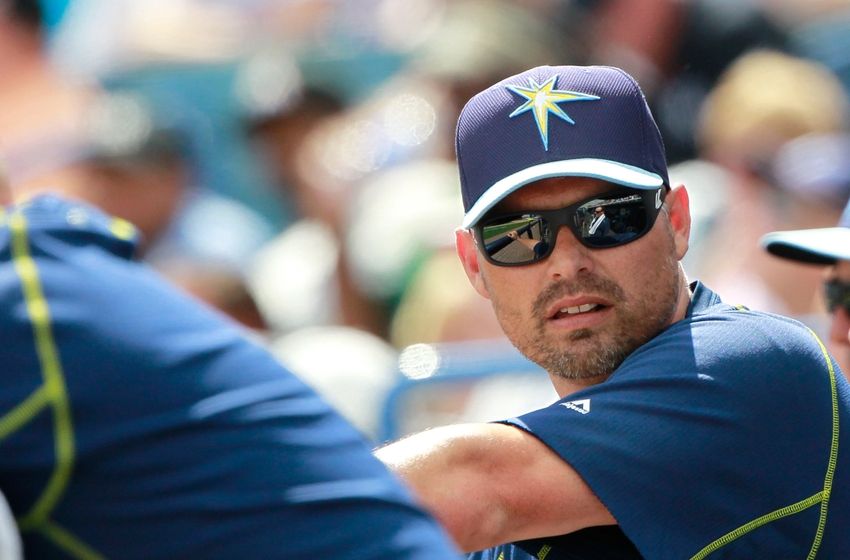ST. PETERSBURG, Fla. – A subtle development can be detected. At the same, this could develop into a trend and a profound effect on the game.
Given injuries, role definitions, and analytics, the use of a starting pitcher, at least at the major league level, is going through a transformation. Traditionally, clubs essentially traverse through a season of five starters to the rotation. In the past few seasons, “the opener” has been introduced and takes into account a reliever pushed into a starting role.
The assignment here lasts about two innings or around 30 pitches. Other relievers are then thrust into the game and use and strategy involving middle relievers and the closer becomes heightened.
The use of an ‘opener” originated with the Rays during the 2018 season and has been employed successfully. Tampa Bay manager Kevin Cash began using relievers for a variety of reasons, including match-ups, the need for a spot starter, and the necessity to limit the workload of specific starters.
Yet, that concept has broadened.
“Teams are using this type on certain days most of the time,” said Minnesota manager Rocco Baldelli. “It’s like when they are forced into this, sometimes. This is through depth questions, injuries, or similar things, I think there are benefits to doing this that are helpful in winning a game. Most teams would probably map their season out. That’s having great starters going out and throwing seven innings. That is what every team probably desires, including us. Very few teams have starters to go into the seventh inning in each start over six months. In order to win and get yourself the best shot, I think this is where we turn.”
In the third game of a four-game set against the Rays in early September, Baldelli and Cash did exactly what they advocated. On Sept. 4, Cash started righthander Cole Sulser (out of the bullpen and his first career start), who lasted two innings and threw 37 pitches. Baldelli countered with rookie right-hander Ronny Henriquez, (his initial major league start) and lasted only through the first inning.
Going forward, the use of an “opener” could remain a manager’s hidden agenda. The traditional five-man rotation still dominates thinking and strategy. With the Rays, a series of injuries and trades involving starters Aaron Civile and Zach Eflin may have forced Cash’s hand. Still, the Rays’ skipper essentially implemented this strategy a few years, and it is not likely to be abandoned.
“With the ‘opener,’ you’re making it more difficult on opposing line-ups,” Cash said during the current Minnesota series. “Sometimes, teams would make decision off the opener if they decided to add another lefty in the lineup and an opposite-handed hitter alters their lineup.”
The introduction of the “opener” is a recent turn for the game and one for which Cash has initial fingerprints on the strategy.
“The opener came about before I got here (Cash took the Tampa job on Dec. 5, 2014),” he added. “This made a lane available for some young pitchers to let them get their feet wet. They would not have the mindset of getting deep in a ball game and turning the lineup over ‘x’ amount of times. We found out this worked and a benefit to young pitchers and neutral matchup pitchers. There was a benefit of that relievers you think highly of and to get him in a less anxiety leverage to start the game. Many factors play into use of the ‘opener.’ and we learned that many factors have contributed to maybe guys having some success.”
On the stretch run … mathematically, the Rays remain in the wild card race but the sands are slowly shifting through the hourglass. The team would have to go on an incredible run. With a 9-4 win over Minnesota on Sept. 4, the team stood at 69-70 with 23 games remaining. While the odds appear insurmountable, the clubhouse remains hopeful.
“It’s not a secret that we need to win almost every day,” said first baseman Yandy Diaz through an interpreter. “Everyone has to put in their head that we have to be ready to go in order to win and get to the playoffs.”
If the task ahead for Tampa Bay is formidable, the schedule ahead is a killer. After a Thursday matinee to conclude a series with Minnesota at home, the Rays hit the road for a 10-game trip. That includes three in Baltimore, three in Philadelphia and four in Cleveland. That includes two division leaders and the Orioles, who are in a tie with the New York Yankees for the AL East division lead.

